In 2014, I drove across the Great Plains with all of my supplies and a portable drafting table. But this year, having just completed another residency program with only two days to gather my supplies and recuperate from jet lag, flying to Wyoming was a better option.

The size of the airplane on the connecting flight from Denver to Sheridan surprised me, especially after my recent experience traveling over the Atlantic Ocean. This regional aircraft was about the size of a CTA bus. When viewed from the inside, the cabin was so small that the wings looked like they were attached to the bottom of the plane. As it turns out, several other Ucross Fellows were on that flight with me; I just didn’t know them yet.
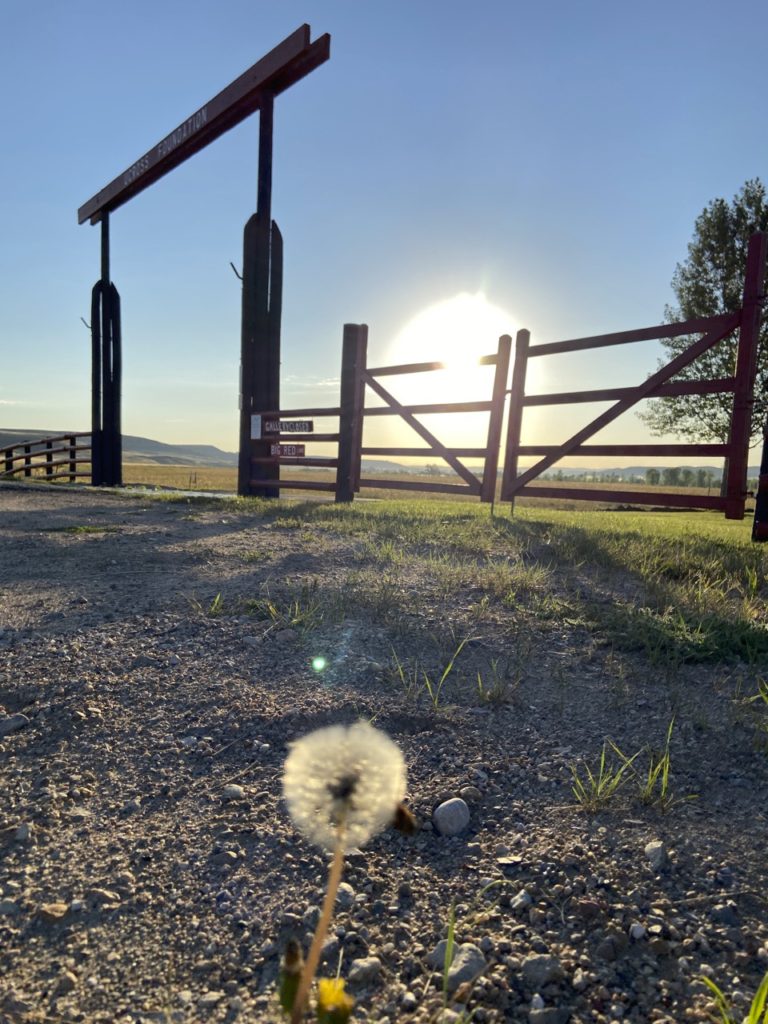
Ucross is situated on an overwhelming 20,000 acres of ranch land. The residency buildings are surrounded by rolling hills in every direction, which makes the experience of being there awe-inspiring. The constant reminders of how tiny we are in the vastness of the universe are even more impactful at night when all the stars are visible. August at Ucross felt very different than my first time almost a decade ago in May. On some cloudy mornings, a red fox hopped through the grass along the road. The rattlesnakes were out and mosquitos rampant, which made my experience of the vast landscape even more vulnerable.
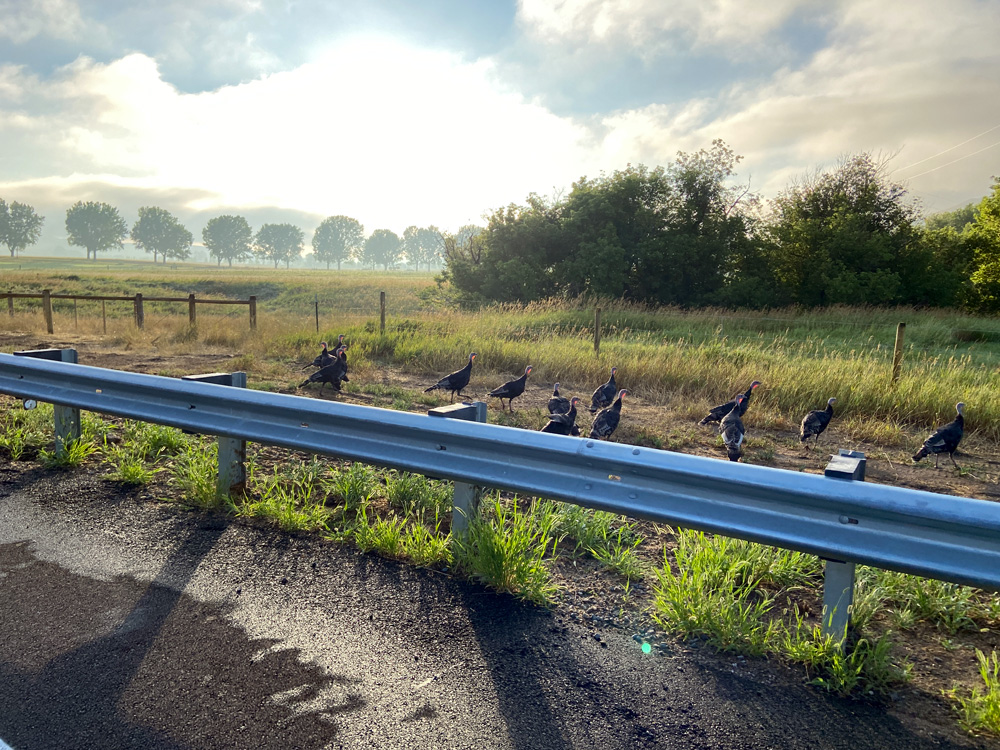
Of all the animals, the wild turkeys were most memorable by far. They typically hung out in large flocks on the grass or along the road. I encountered them almost daily on the way to the studio and tried giving them space as they seemed quite wary in their encounters with humans. The first time I saw one, it was perched on the post of a fence. I texted my spouse about the large bird in the distance, either a wild turkey or a turkey vulture. He asked if it had shoulders and added that vultures have shoulders but turkeys don’t—that they look more like bowling pins. One of the other fellows in residence, David Ulin, was so moved by the turkeys that he wanted to write an essay about them. I came across a turkey feather and made him a quill pen for his endeavor.
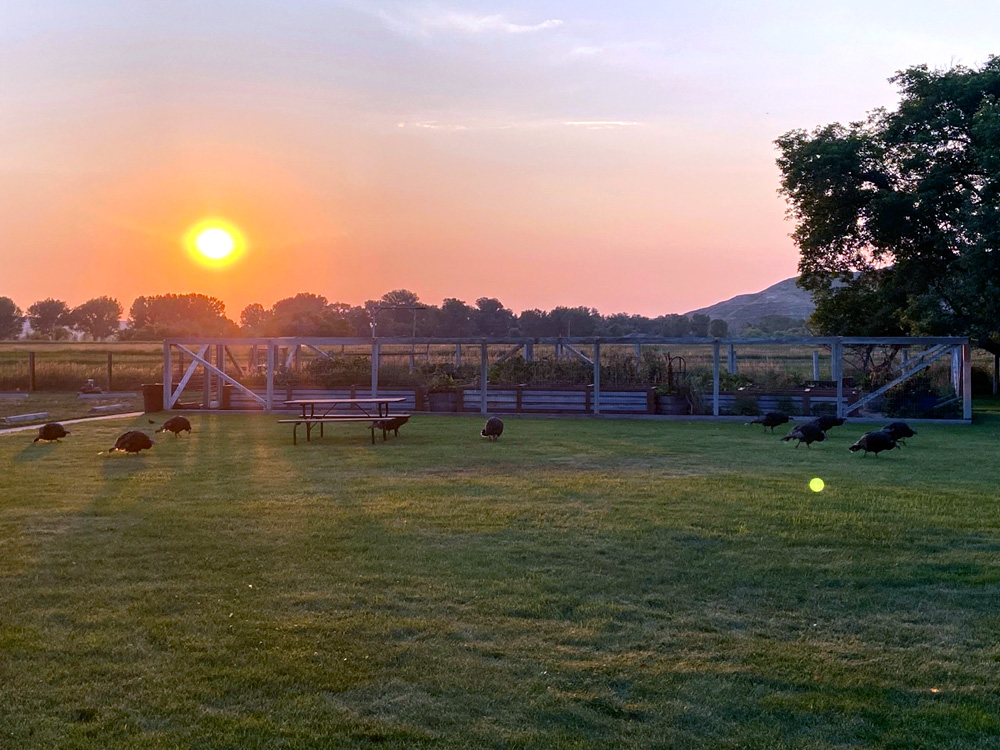
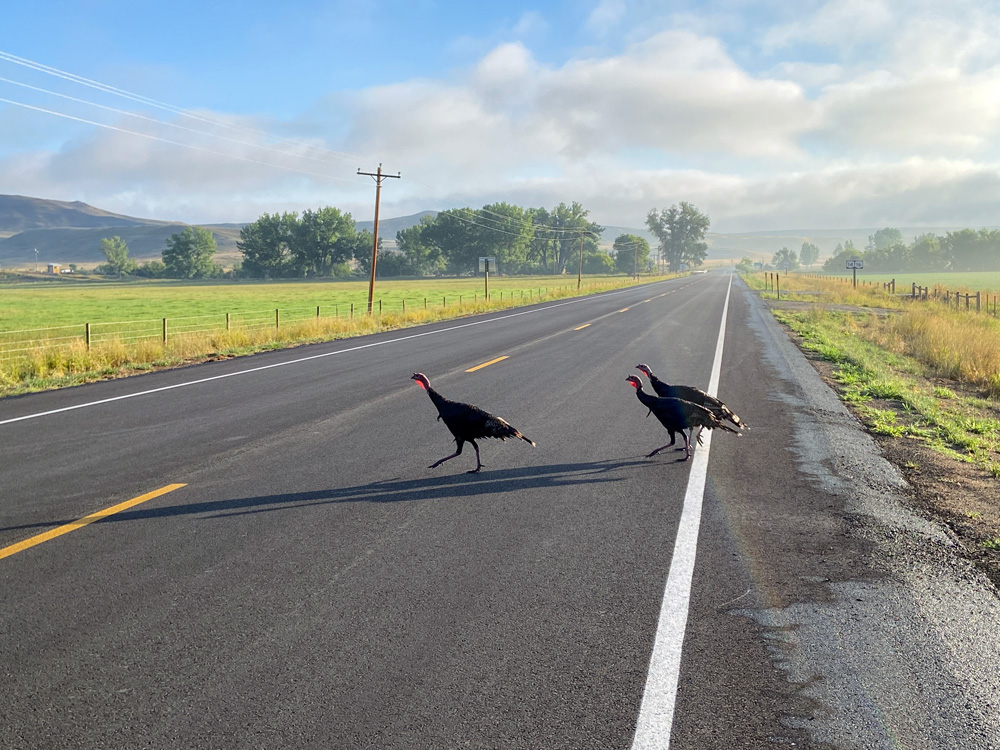
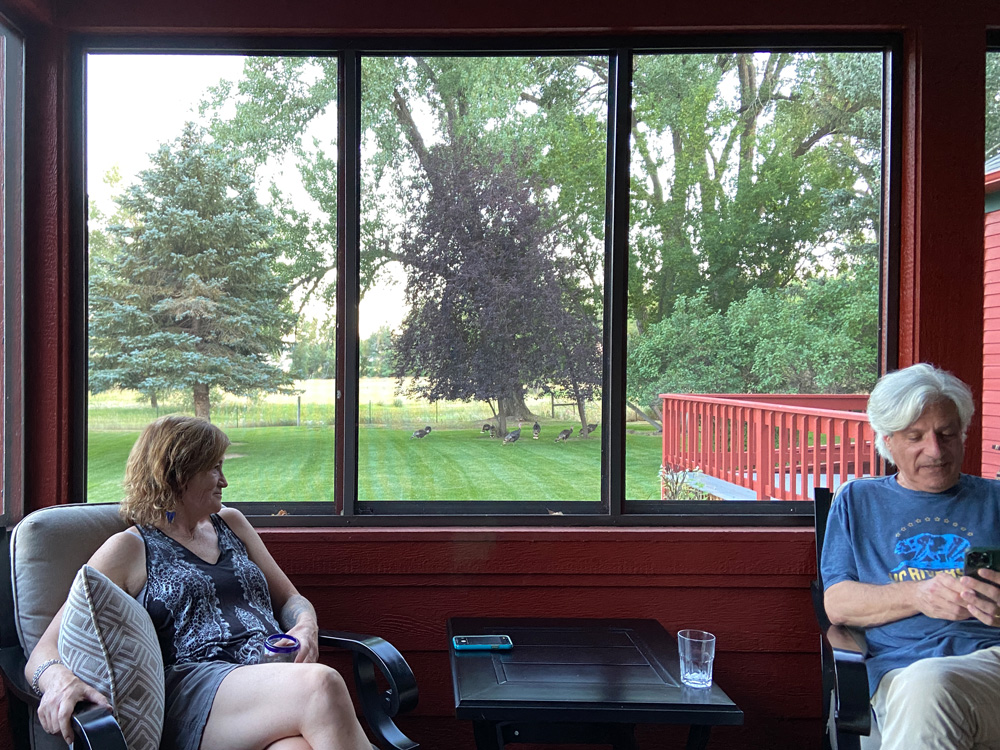

What sets this program apart from all the others is the unbelievable food cooked by the residency chef, Cindy Brooks. During the pandemic, when most residencies closed for a year or so, Cindy used that time to put together a cookbook with coauthor Cree LeFavour, featuring all of the recipes from the residency dinners. Everyone commented on how amazing the food was. Remembering that I gained 10 lbs in less than a month last time I was here, I made a resolute effort to eat smaller portions this time. It wasn’t easy.
On one of my first few evenings at Ucross, I noticed a bunch of liquor bottles left behind by the artists and writers who were in the previous cohort, in July. Various kinds of bitters, maraschino liqueur, crème de violet, flavored vodkas, and an orange brandy were among the many exotic drinks clustered on a small table. I texted a knowledgeable friend a photo of the assortment, and he replied “Obviously they were making aviations!” I looked up a recipe and made aviations for anyone interested. It’s a fantastic cocktail. I highly recommend it.
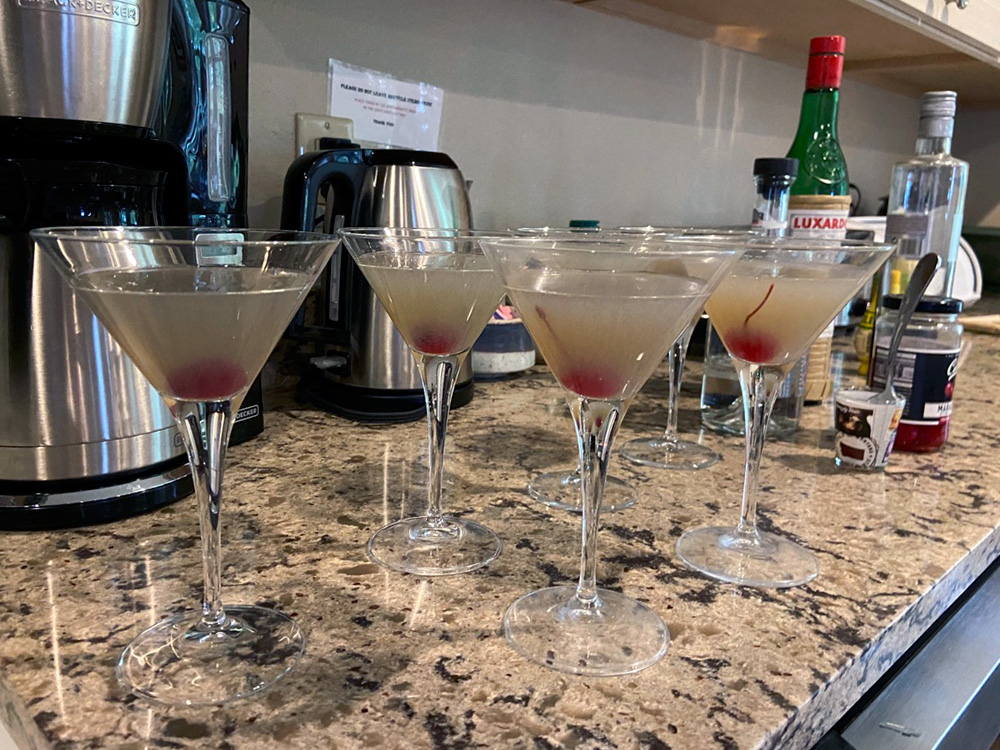
Meeting the other artists, writers, and composers was a blast. We spent countless evenings gathered on the enclosed porch, drinking and discussing art and life. I spent the most time with Guillermo Galindo, a composer from Oakland who grew up in Mexico. We shared a great deal of music and art with each other; our aesthetic interests resonated in a way that I rarely encounter.
As is the case at most residencies, the visual artists hosted an open studios event, while several of the musicians and writers put on informal performances and readings for the group. Guillermo and Andrew Samarasekara improvised a lovely concert in Guillermo’s studio on site. A few of us had the rare opportunity to be there in person.
I returned to The Occidental in the small town of Buffalo this year for their Thursday open mic night and noticed a few things that had changed since 2014. The audience was generally older. At the end of the night, everyone sang Amazing Grace just like they did back then, except this time they also held hands forming a large circle. I wondered if this tradition began during the pandemic.
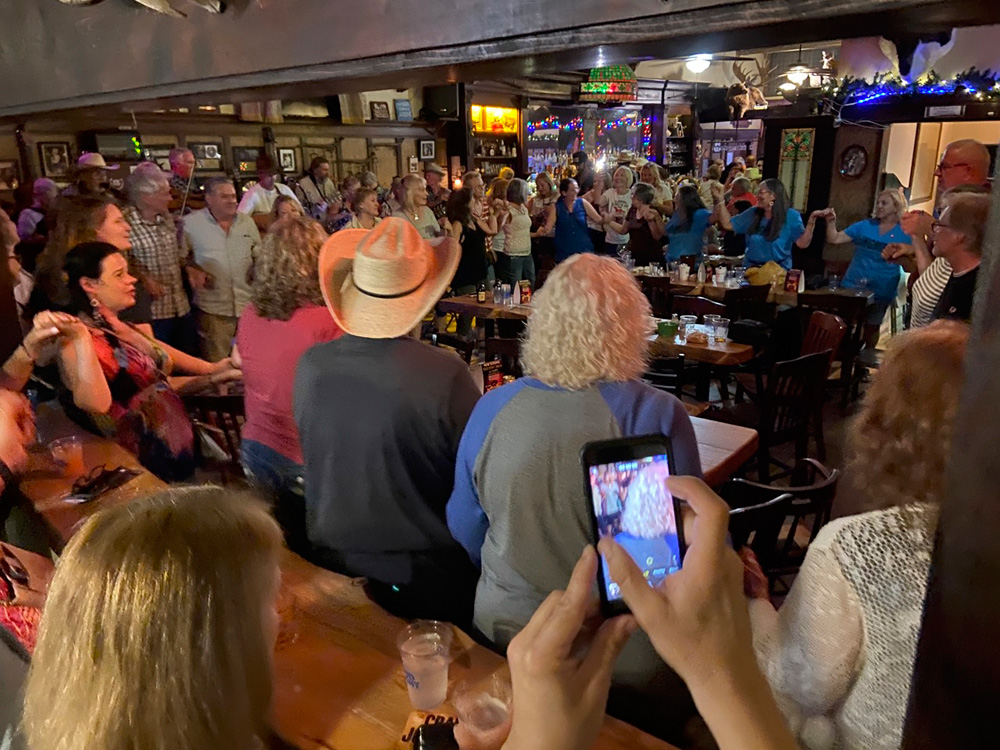
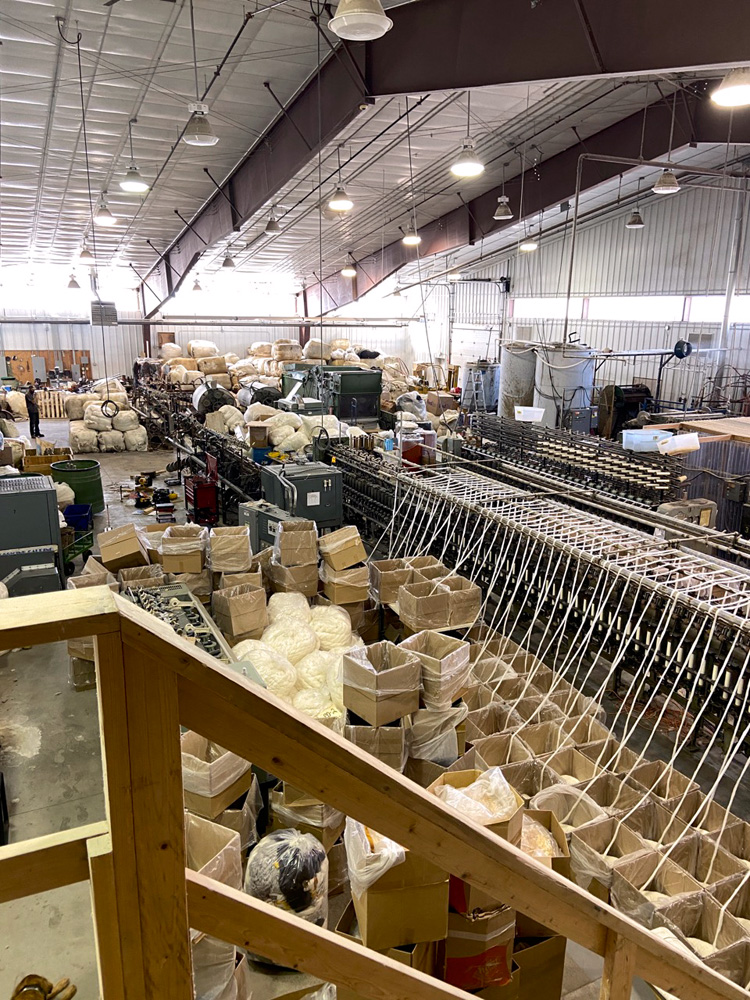
In Buffalo, I also visited the large Mountain Meadow wool mill which I hadn’t noticed before. One of the other visual artists at Ucross, Jane Schiffhauer, needed to collect some wool for felting in her sculptural work, so I came along. We took a tour of the enormous facilities, and I learned more about wool processing than I could have ever imagined.
My own work took an unusual turn at Ucross. I finished a piece that I began a year ago. I also worked with much larger sheets of polypropylene, trying new things and taking risks. Unlike 2014, when I felt overwhelmed by the huge studio and generous accommodations, this time I came to the residency after two completely uninterrupted months of working, so I already had some momentum. I used my time here to understand and solidify a new aesthetic direction. I wrote about these developments and posted some images in a separate entry.
I am forever grateful for the time and space afforded by this program. The experience will stay with me for years to come.